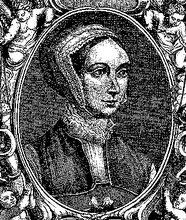Passing along the South Walk in Dorchester one sees a group of figures whose presence and demeanour do not catch one's attention until one draws near. Suddenly the figures, which seems like a group of friends in conversation stand out from the other people on the pavement.

In fact, these are stautues cast in metal. They are set on the site of the former Gallows, which, four hundred years ago would have stood just outside the old town walls of Dorcehester. They represent the Catholic Martyrs of Dorset, six of whom were executed at this site. The statues depict two people who are facing death, and although lacking a certain comeliness, could in fact, stand for any casual group of people. Therein lies the significance, to my mind, of this memorial. For the people who were executed here for Christ, were ordinary people. What distinguishes them is that they gave public witness to the Mystery of Christ before the people of Dorchester, of Dorset, and of the whole country. This memorial is quite extraordinary, given the culture and attitude of this country today. Its human dimension together with its very public, yet urbane nature, places these martyrs right at the centre of our life and our culture. Before any religious distinctions can cloud the reality, and before any polemic can take away from the directness of their example, six men, gave public witness, before all the authorities and before all the people, to the reality of the saving Mystery of Jesus Christ. What an extraordinary sign for any town in our country to be marked with.
Blessed Thomas Pilchard, priest, hung, drawn and quartered here 21st March 1587.
Blessed William, Pike, layman, hung, drawn and quartered here in 1591.
Blessed John Cornelius, Jesuit priest, hung, drawn and quartered here 4th July 1594.
Thomas Bosgrave, layman, executed here 4th July 1594.
John Carey, layman, executed here 4th July 1594.
Patrick Salmon, layman, executed here 4th July 1594.
Hugh Green, priest, hung, drawn and quartered here 19th August 1642.
Martyrs of Dorchester, pray for us, that the witness we give may also give life to many.
The memorial stands at the south end of a road called Icen Way. This road begins at the High Street where, in former times, the gaol stood.
I took the above photo from the High Street looking down Icen Way, the lane down which the martyrs would have been dragged. The site of the gaol is now a take-away. Much of the town of Dorchester was burned down in the 1700s and therefore very few of its mediaeval buildings remain. It was in this gaol that the martyrs were held before their execution.































































